Journey Map
My brain at 3 AM: “Let’s rethink every life decision ever.”
Sound familiar? If you’re a woman who’s ever found herself wide awake at 3 AM questioning everything from your career choices to what you had for dinner, you’re not alone. We’ve entered the era of “sleepmaxxing” – this viral trend promising perfect sleep through mouth tape, $300 tracking devices, and magnesium cocktails. But here’s what nobody’s talking about: most sleep advice completely ignores how different women’s bodies actually are.
I’ve spent years experimenting with my sleep, from chaotic party nights in my twenties to current 7 AM wake-ups in Bali. What I’ve learned is that sleep optimization for women isn’t about following another perfectionist routine – it’s about understanding your unique rhythms and honoring them, even when they don’t look Instagram-worthy.
My Sleepmaxxing Experiment (And Why It Backfired)
When I started focusing on sleep optimization, I wasn’t one of those people obsessed with every TikTok trend or spending hundreds on gadgets. I approached it more thoughtfully – trying magnesium oil on my feet, using the blue light filter on my iPhone, occasionally checking my Apple Watch sleep data when I remembered.
But here’s what I noticed: I was following advice clearly designed for men. The sleep schedules, the temperature recommendations, the rigid routines – none of it accounted for my menstrual cycle. During PMS weeks, when my progesterone crashed and I naturally needed more sleep, I’d feel frustrated that the same routine that worked two weeks earlier suddenly didn’t.
I’d read about going to bed at exactly 10 PM every night, maintaining the same wake time regardless of how I felt, and pushing through when sleep didn’t come easily. But my body was telling me different things throughout the month – sometimes I was naturally tired at 9 PM, other times I felt wired until 11 PM.
The problem wasn’t that I was obsessed with optimization – it was that I was trying to fit my female body into male-designed sleep advice. I was ignoring my own cycles and rhythms in favor of generic “best practices.”
That’s when I realized: what if instead of following someone else’s formula, I learned to listen to my own patterns?
Why Sleep Optimization for Women Looks Different
Before we dive into solutions, let’s address the elephant in the bedroom: women’s sleep challenges are fundamentally different from men’s. Research published in PMC reveals that “ovarian hormones regulate the neurocircuitry related to sleep such that women are biologically predisposed for disrupted sleep.” We’re not just being dramatic when we say our periods mess with our sleep – science backs it up.
Yale Medicine sleep specialist Christine Won, MD, confirms that “insomnia is much more common in women than men,” caused by a variety of psychological, social, and physiological factors. Yet most sleep optimization content treats us like smaller men with the same circadian rhythms. We’re not.
I’ve noticed that I find it much harder to fall asleep before my period. My partner doesn’t understand why I’m suddenly tossing and turning when “nothing has changed” in our routine. But everything has changed – my progesterone levels have dropped dramatically, and my brain chemistry is different. Research shows that “immediately before bleeding begins, a woman’s progesterone levels dip dramatically, which is why some women can find it really difficult to get quality sleep in those ‘PMS’ days.”

The Science Behind Women’s Sleep Challenges
Let’s get scientific for a moment because understanding the “why” makes everything else make sense. Estrogen and progesterone are the major female hormones, and their rise and fall throughout a woman’s menstrual cycle contribute to sleep challenges. Progesterone is known as the “relaxing hormone” with a mildly sedative effect.
Here’s what happens during your cycle: During the follicular phase as you approach ovulation, estrogen and progesterone levels rise, and you might feel drowsier. After ovulation, these hormones peak, and sleep often comes more easily. But just before your period starts, during the luteal phase, progesterone levels drop dramatically. This is when many women find it difficult to get quality sleep.
Recent research in PMC shows that “pathologic sleep patterns are closely linked to menstrual irregularity, polycystic ovarian syndrome, premature ovarian insufficiency, sub/infertility, and early pregnancy loss.” This isn’t just about being tired – disrupted sleep can affect our entire reproductive health.
Sleep expert Jessica Mong, PhD, from the University of Maryland School of Medicine, tells Yahoo Lifestyle that age and hormones contribute to a greater need for sleep among women. We literally need more sleep than men, yet we’re often the ones sacrificing sleep for family, work, and everyone else’s needs.
A comprehensive 2023 review in Frontiers in Sleep found that “women may be more susceptible to sleep disturbance, and that gender-specific factors should be considered when evaluating sleep in clinical practice.” This means that cookie-cutter sleep advice isn’t just ineffective for women – it can be harmful when it makes us feel like failures for not achieving “perfect” sleep.
From Sleep Chaos to Conscious Rest: My Journey
I just love sleep – I love sleeping, I love spending time in bed, I love long mornings and the coziness of the bed. But my relationship with sleep hasn’t always been easy. Sometimes I have insomnia, sometimes I find it very difficult to get up in the morning. Of course, watching movies until late and other factors we all deal with as humans often contribute to this.
The Bali Wake-Up Call
When I returned to Bali after nine months of traveling through the Americas, I was desperate to get my life back together. I started my blog evejiyu.com, which required intense concentration, but I found it impossible to be productive. I would go to bed late, wake up tired, go to the gym late, have lunch, and my working day wouldn’t start until around 3 o’clock when I was already exhausted.
My sleep rhythm had been completely out of sync since childhood. In my late teens and early twenties, I was the queen of all-nighters – parties, lectures, work, you name it. Even when I became more conscious of my sleep patterns in my late twenties, it was far from balanced. Nine months of travel didn’t help: sleeping on overnight buses, depending on scheduled flights, hotels with planned adventures that often didn’t happen. My whole life rhythm, including my sleep patterns, was extremely chaotic.
When I Discovered Women’s Sleep Isn’t Men’s Sleep
My “aha moment” came when I started my journey of self-discovery. I just wanted to feel good – to not feel anxious, to have a clear mind, and to be tired and productive during the day. I started reading extensively and was impressed by Andrew Huberman’s podcasts, where he talks about the importance of quality sleep and morning and evening brain hygiene.
However, I noticed that most podcasts and articles talk about sleep from a male perspective. While the advice worked to some extent, I wanted to explore women’s sleep specifically. After all, we’re influenced by hormones – I myself notice that I find it much harder to fall asleep before my period. We’re influenced by hormones throughout the month, our moods fluctuate, and the quality of our sleep is also affected by hormones.
Although it’s said that you have to control your thoughts and realize you are not your thoughts, it’s also important for us women to understand that not only our thoughts are influenced by hormones (I’m so glad my partner can’t read my mind during PMS 😀), but even our exercise cycles and ultimately our sleep cycles are influenced by hormones and different periods of our lives.
Sleepmaxxing vs. Conscious Sleep Optimization
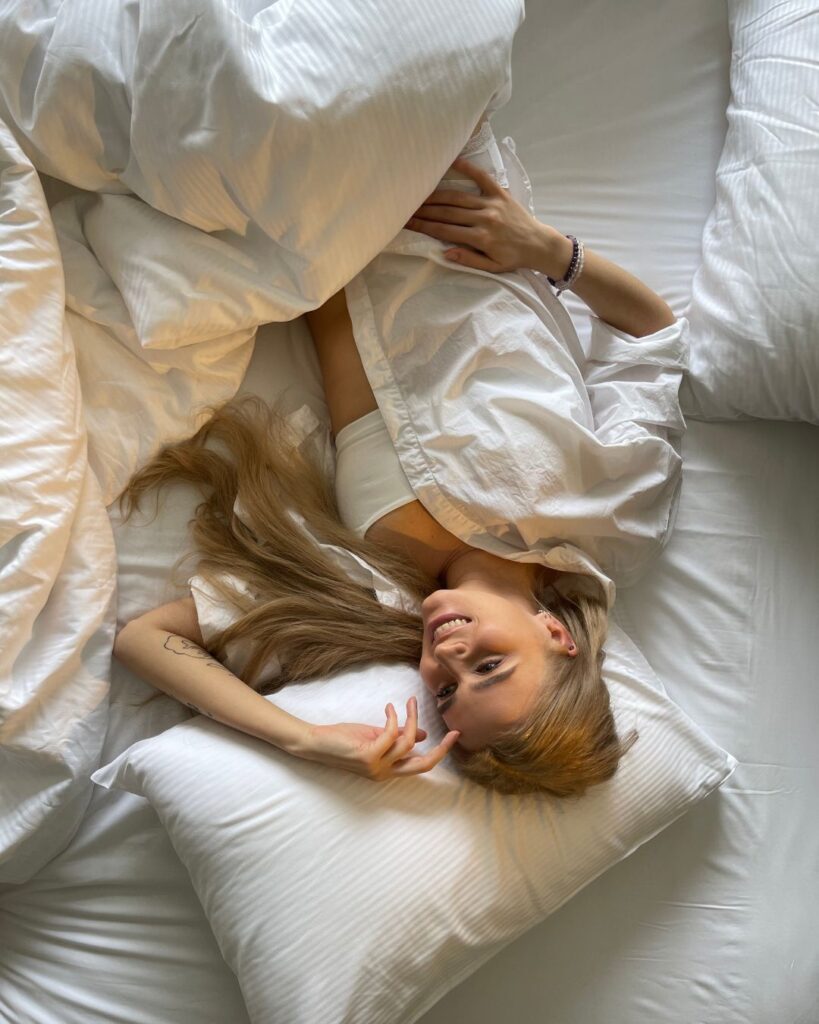
The Problem with Perfectionist Sleep Culture
Merriam-Webster defines sleepmaxxing as “the use of practices and devices purported to help increase the quality and quantity of sleep.” The trend, which exploded on TikTok with over 130 million posts, involves using multiple “hacks” simultaneously: mouth tape to force nose breathing, magnesium supplements, expensive sleep trackers, red light therapy, weighted blankets, specific sleep positions, and elaborate evening routines.
CBS News reports that young adults are layering these techniques, tracking every metric, and obsessing over achieving “perfect” sleep scores. Some sleepmaxxers use 5-10 different products and practices nightly– from nostril expanders to specialized pillows to temperature-regulating pajamas.
The problem isn’t the goal – it’s the execution and the perfectionist mentality driving it. I’ve noticed that I use some sleepmaxxing techniques myself, although I hadn’t heard the term before. It’s essentially a trendy label for good sleep practices. But like all trends, this one tends toward extremes. This is the core problem with most sleep optimization for women advice – it ignores our unique biological needs.
Sleep scientist Vanessa Hill recently told CBS News that while the sleepmaxxing trend may be beneficial because it gets people thinking about their sleep, “sometimes when people can be too perfectionistic about their sleep, it can backfire.”
Women often want to be perfect in many areas and blame themselves if they’re not. The sleepmaxxing trend contributes to this distorted attitude, where women apply unrealistic standards to themselves without considering that hormones can affect sleep rhythms. While I completely agree with evidence-based sleep practices, I’d like women to be gentler with themselves and mindful of their unique cycles.
What Conscious Sleep Actually Means
For me, conscious sleep means honoring your body’s actual needs instead of chasing perfect metrics. It’s the difference between asking “How can I optimize my sleep?” versus “What does my body need tonight?”
Conscious sleep recognizes that your needs change throughout your menstrual cycle, during stressful periods, and across different life phases. Some nights you might need 9 hours, others 7.5. Some weeks you need to go to bed at 9 PM, others 10 PM works fine.
The goal isn’t perfection – it’s self-awareness. It means tracking how you feel, not just what your devices tell you. It means choosing rest over productivity when your body asks for it, even if that means disappointing others or missing out on social events.
Most importantly, conscious sleep means giving yourself permission to have different needs than the men in your life. Your boyfriend might thrive on 6 hours; you might need 8.5. Both are normal.
What Women Should Actually Do Differently Than Men
This is where the conversation gets practical. Real sleep optimization for women starts with understanding these differences. What does it actually mean for your nightly routine? How should your approach look different from your boyfriend’s, your brother’s, or the male sleep influencers dominating your feed?
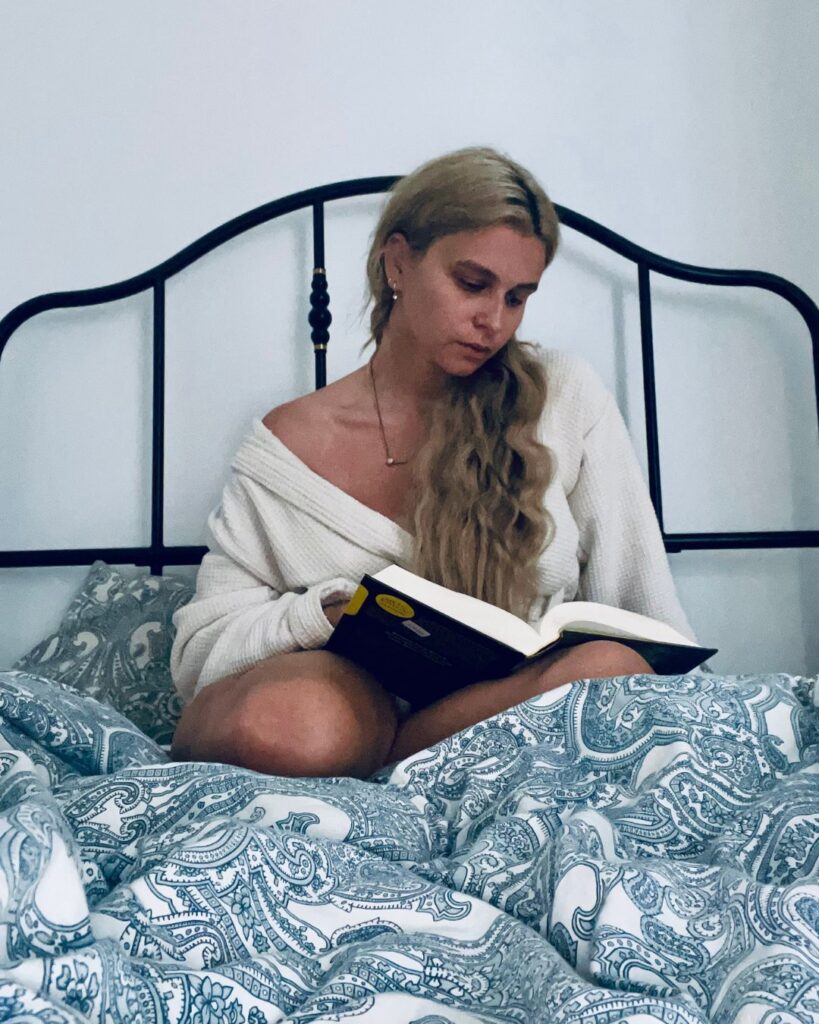
Honor Your Hormonal Rhythm
The biggest difference is this: men’s sleep needs are relatively consistent throughout the month. Ours aren’t. And that’s not a flaw – it’s biology.
Track your cycle and notice patterns. I use a simple app to mark when I have trouble falling asleep, when I wake up feeling exhausted despite eight hours, and when sleep comes easily. The pattern became clear: the week before my period, I need 30-45 minutes more sleep and should go to bed earlier, not later.
If your boyfriend can function perfectly on seven hours while you’re premenstrual and dragging after eight, that doesn’t mean you’re weaker. It means your progesterone has dropped and your body is working harder to regulate itself.
Allow yourself those extra 20-30 minutes without guilt. If he questions why you’re going to bed earlier, show him the Loughborough University research that found women need about 20 minutes more sleep than men. Science backs you up.
Your sleep needs aren’t static – they change throughout your monthly cycle, and that’s completely normal. During the follicular phase (first half of your cycle), you might find it easier to fall asleep as estrogen and progesterone rise. After ovulation, when these hormones peak, sleep often comes naturally.
But in the week before your period? That’s when progesterone crashes, and suddenly you’re lying awake at 2 AM even though you’re exhausted. Instead of fighting this, adapt to it. Track your cycle alongside your sleep patterns. Notice when you naturally want to go to bed earlier, when you need extra sleep, and when falling asleep feels impossible. Then plan accordingly – schedule important meetings during your naturally energetic phases, and give yourself permission for gentler evenings during PMS weeks.
Temperature and Timing Differences
Women’s core body temperature fluctuates more dramatically throughout our menstrual cycle than men’s does throughout their entire month. This affects how we experience bedroom temperature.
I keep our bedroom between 15-18°C (60-65°F), which my partner initially found too cold. But research shows women often need slightly cooler environments, especially during the luteal phase when our body temperature naturally runs higher.
Successful sleep optimization for women requires acknowledging these temperature fluctuations. Layer your bedding so you can adjust throughout the night without disturbing your partner. I use a light cotton sheet, a medium blanket, and keep a heavier blanket within reach. On hot flash nights or right before my period, I can kick off layers. During ovulation when I run colder, I can add them back.
Your boyfriend might prefer a consistent 20°C (68°F) all month. You might need 17°C (62°F) some weeks and 19°C (66°F) others. Both are normal.
Here’s something that changed everything for me: women’s melatonin peaks about an hour earlier than men’s. This means your natural bedtime is likely 30-60 minutes earlier than his.
I used to force myself to stay up until 11 PM because that’s when my partner was winding down. I thought going to bed at 9:30 PM made me boring or antisocial. But when I started honoring my natural rhythm, my sleep quality improved dramatically.
If your boyfriend can watch Netflix until 11 PM and fall asleep by 11:15, that doesn’t mean you’re broken if you need to stop screens at 9 PM and read until 10 PM to fall asleep well. You’re working with different circadian rhythms. Don’t force yourself to match his schedule. Honor yours.
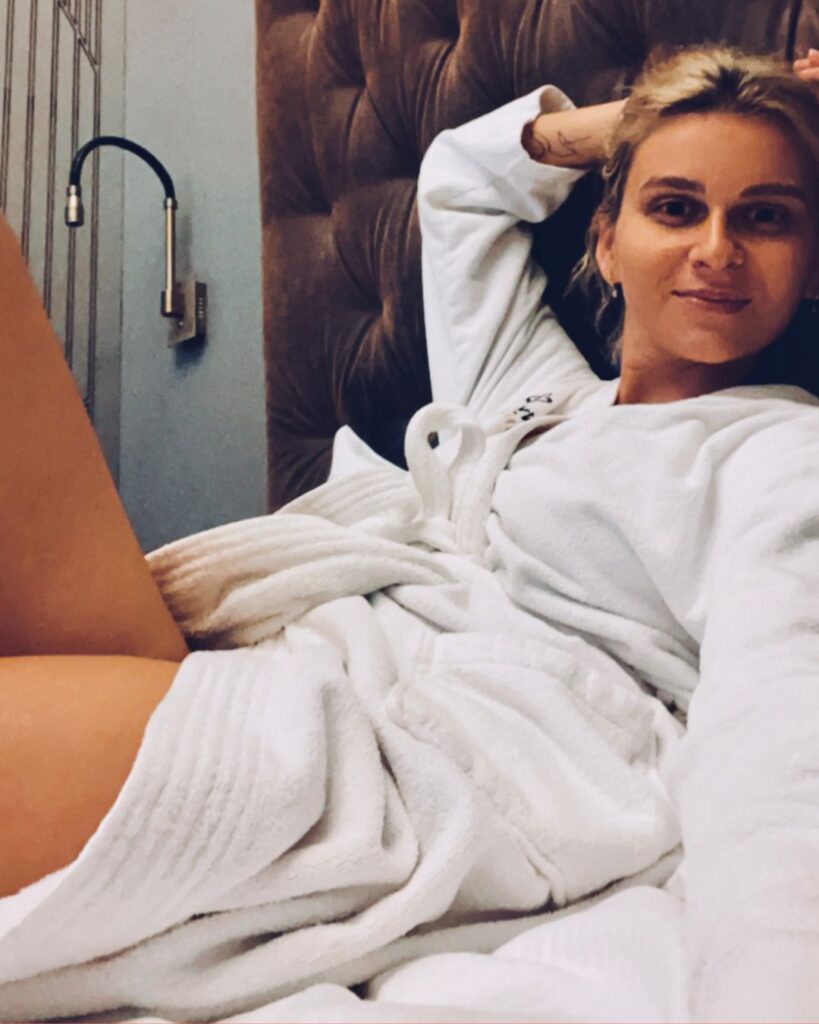
Address the Mental Load
Research shows women have a stronger correlation between stress and sleep disruption than men do. We’re also more likely to ruminate – to lie awake thinking about tomorrow’s to-do list, replaying conversations, or planning the week ahead.
This isn’t weakness; it’s often the result of carrying more mental load. This is why effective sleep optimization for women must address both physical and mental factors. Women typically manage more household logistics, family coordination, and emotional labor – even when working full-time.
My solution: a “brain dump” journal by my bed. Before sleep, I write three things:
- What I’m worried about
- What I need to remember for tomorrow
- One thing I’m grateful for today
This practice signals to my brain that these thoughts are captured and don’t need to cycle through my mind all night. My partner finds this unnecessary – he can compartmentalize more easily. I’ve learned to stop comparing and start honoring what my brain needs.
Your Sleep Optimization Action Plan
Here’s my current evening routine – it’s imperfect but real, and it works for my female body:
8 PM: Stop scrolling on my phone (yes, I’m only human too, so sometimes I read the latest message that just came in)
6 PM (or earlier): Eat dinner at least three hours before bedtime
9 PM: Read a book – my goal is to read at least 10 pages every day. Sometimes I listen to calming meditation or affirmations before bed
10 PM: Lights out. I aim for at least 8 hours of sleep, but 9 hours is perfect for me
Morning: I get up at 7 AM feeling rested and productive, which makes it much easier to stick to my habits and achieve my goals
I put my phone as far away as possible – ideally out of the room. Sometimes I put magnesium oil on my feet and a dry towel with lavender essential oil on my eyes. I occasionally track my sleep with my Apple Watch to see patterns, but I don’t obsess over the data.
Of course, I’m not perfect. I often like to watch a movie on weekends, so I fall asleep later and sleep longer, but I try not to do that because I don’t want to disrupt my routine.
Here’s what sleep optimization for women looks like in practice:
For Evening Routines:
- Women: Longer wind-down needed (30-60 minutes)
- Men: Often can fall asleep faster (15-30 minutes)
For Wake Times:
- Don’t feel guilty about different bedtimes from your partner
- Your 9:30 PM bedtime might align perfectly with his 10:30PM bedtime
For Cycle Tracking:
- Notice your sleep needs throughout the month
- Adjust expectations rather than fighting your biology
- Communicate these changes to your partner
For Temperature Control:
- You might need cooler/more variable temperatures
- Layer bedding for individual comfort
- Don’t compromise your sleep for shared comfort
Start small: If you don’t know what time you go to bed, set a reminder for 10 PM and don’t turn it off. You may not always listen to it, but constant reminders will give you the incentive to go to bed on time eventually. If you don’t succeed once, try a second and third time. Don’t be afraid to make mistakes. Read only five pages at bedtime – after a week, you’ll find that you’ve read ten pages and fall asleep very well afterward.
The quality of my sleep determines the quality of my life. Sleep optimization for women isn’t about perfection – it’s about honoring your body’s wisdom, understanding your unique rhythms, and creating sustainable practices that support your growth rather than adding to your stress.
Remember, you don’t need permission to rest. You don’t need to optimize every aspect of your sleep to deserve quality rest. Sometimes the most radical act of self-care is simply going to bed early because that’s what your body needs– even if that’s earlier than everyone else in your house.
Start tonight. Set that reminder. Read those five pages. Put your phone in another room. Go to bed when YOUR body is ready, not when someone else’s is. Your future self will thank you – not because you achieved perfect sleep, but because you chose to honor yourself exactly as you are.
QUICK REFERENCE CHECKLIST
Honor Your Cycle:
- Track sleep needs throughout your month
- Allow extra 20-30 minutes before your period
- Don’t fight your natural rhythms
Optimize Your Environment:
- Keep bedroom 15-18°C (60-65°F)
- Layer bedding for temperature control
- Go to bed 30-60 minutes earlier than male partners
Address Mental Load:
- Brain dump journal before bed
- Write: worries, tomorrow’s tasks, gratitude
- Put phone outside bedroom
Start Simple:
- Set 10 PM bedtime reminder
- Read 5 pages before sleep
- Aim for 8-9 hours total sleep
Remember: Your sleep needs are different from men’s – and that’s not a problem to fix, it’s biology to honor.


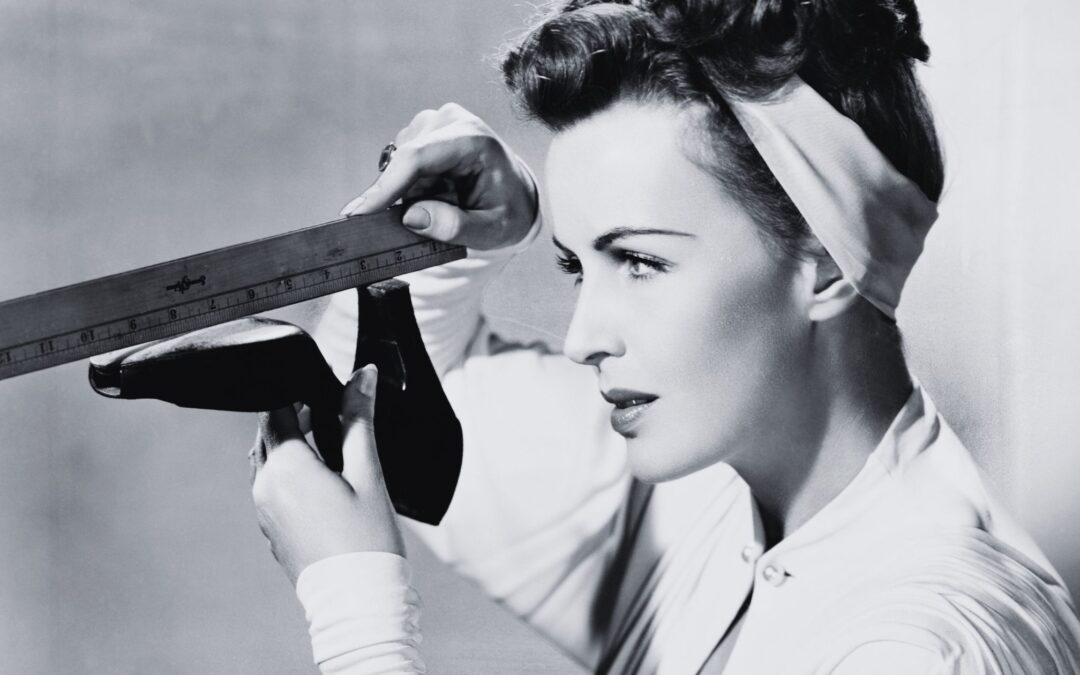


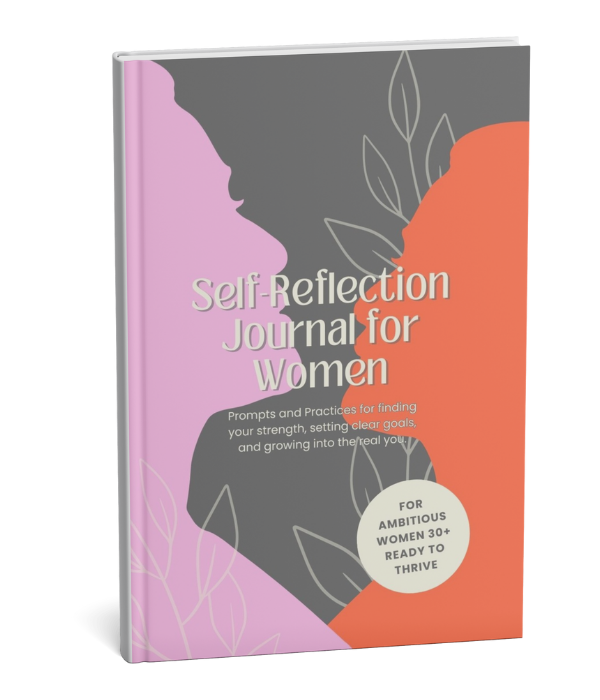
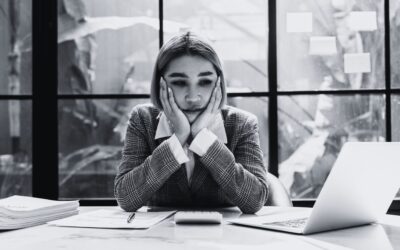







0 Comments